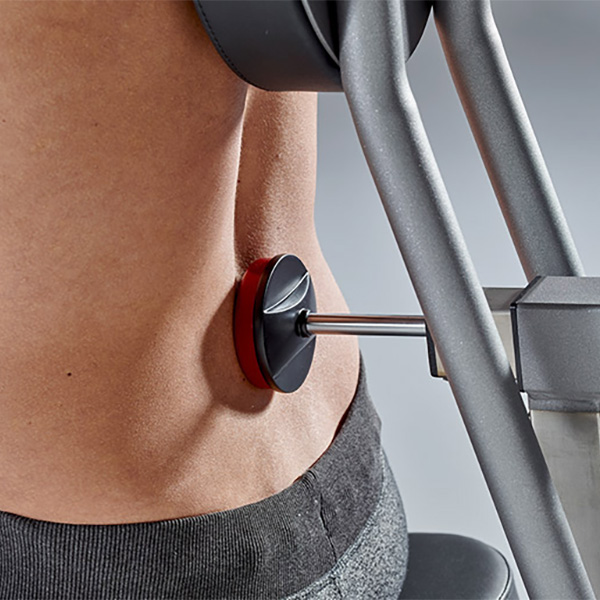Dr. WOLFF Back Therapy Center
Segmental Stabilization
Deep Muscle Training
Current research in back therapy consistently shows that, before starting strength training, the segmental stabilization of the lumbar spine must be performed. The primary muscles responsible for the lumbar spine are the deep muscles, the M. transversus abdominis and the M. multifidus lumbalis. These are not large, strong movement muscles but rather sensitive positioning and stabilizing muscles. They position the individual vertebrae in the biomechanically correct alignment to protect, for example, the intervertebral disc from improper stress.
Lumbar Spine
Motorische Kontrolle
Many back patients have lost the important motor control of the lumbar spine. Practicing
coordinatively demanding movements in the Back Therapy Center improves motor control and forms the foundation for
further training.
Training of the deep muscles:
Due to protective postures and constant underuse, the muscles M. transversus abdominis and M. multifidus lumbalis
have atrophied in their function. Accordingly, strengthening these deep muscles is of fundamental importance in
modern back therapy.
BIO FEEDBACK
Sensitive Digital Sensors
The exceptional device technology supports the therapist in the difficult task of
reactivation: Sensitive digital sensors record the small movements the patient performs and
document the training movement via an optical display unit. The key to success lies in the visualization of the training movement
and the exercise position:
• Easy learning of stabilizing exercises
• Quickly internalizing the movement sequences
• Low-risk movements
• Defined range of motion
• Controllable from minimal, patient-friendly,
up to extremely high load intensity.

EQUIPMENT TECHNOLOGY
All devices comply:
CE according to Medical Device Directive (EU) 2014/745 (MDR)
The training media were specifically developed for segmental stabilization of the lumbar spine according to Dr.
WOLFF.
An intelligent device design ensures unique biomechanical solutions (patented). Simple and convenient operation
facilitates instruction and independent training for patients.






 MULTIFIDUS-TRAINER 907
MULTIFIDUS-TRAINER 907 TRANSVERSUS-TRAINER 917
TRANSVERSUS-TRAINER 917 STANDING STABILISATION 927
STANDING STABILISATION 927 LATERAL-SHIFTING 937
LATERAL-SHIFTING 937 STANDING ROTATION 947
STANDING ROTATION 947